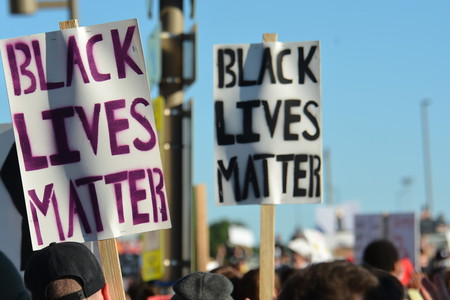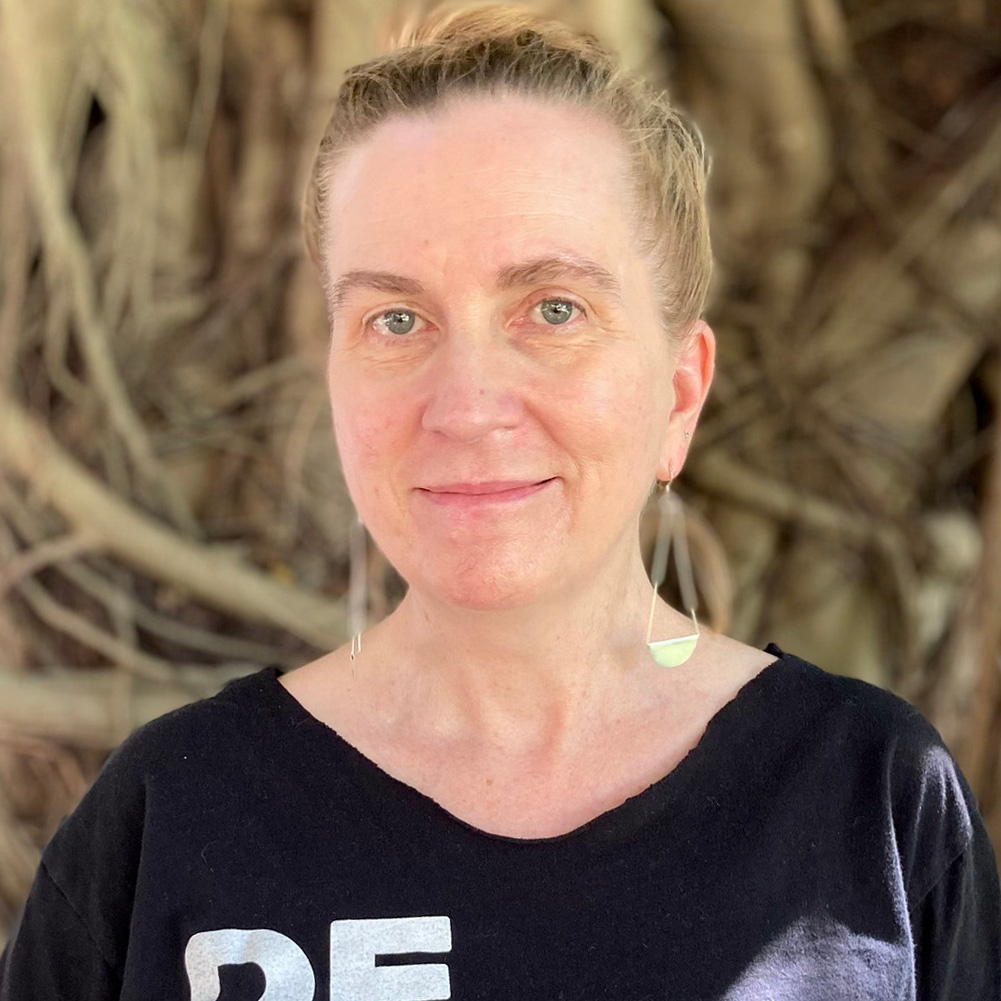
In a country where police officers regularly kill people with impunity, the murder trial and conviction of Officer Derek Chauvin in the death of George Floyd has refocused attention on the violence of policing—and the need to change the way we think about safety.
It is also a chance for us to grow from the seeds planted by the protests across the U.S. in the aftermath of the police murders of George Floyd, Breonna Taylor, Tony McDade, and so many others—fueling the call to defund the police.
Cities across the country—from San Francisco to New York City—are responding to public demands and reexamining the budgets of their police departments and how resources must be better distributed.
Take action: Tell your governor to invest in communities, not policing!
This historic moment presents a critical opportunity for us to dismantle the racist system of law enforcement that has targeted Black and Brown people for police violence, incarceration, and death—and construct a system based on respect, equity, and human dignity. At the same time, there is also uncertainty, fear, and misinformation about the call to defund the police and how we reimagine public safety.
What do we mean when we say “defund the police”?
We want an immediate and substantial reduction of state, local, and federal funding to police departments, sheriff departments, and state and federal law enforcement agencies. Instead we want funding to be invested in what actually creates safe, healthy communities: housing, health care, mental health and addiction services, and community-based transformative and restorative forms of justice that address the root causes of harm and violence.
For those of us who are white, it can be very difficult to imagine dismantling a system that was designed to protect our privilege. But wealthy white communities live without police on every corner or in the schools, and experience little fear of violence from law enforcement—while at the same time they have well-resourced schools, comfortable housing, access to food and health care. The call to defund the police is a call for all communities to have access to these resources. Can we begin to imagine a police-free world for everyone?
We can start by challenging the assumption that we need armed security forces to solve our problems. Right now, police are called on to respond to a wide variety of crises that others are far better equipped to handle. Rather than sending in armed law enforcement prepared to use lethal force, many issues would be better addressed by mental health professionals, social workers, addiction specialists, and people with training in de-escalation and conflict resolution.
But right now, when facing situations that we don’t feel we can handle on our own, we are taught that the only support available to us is to call the police. It doesn’t have to be that way. U.S. cities collectively spend $100 billion a year on policing—imagine what else we could create with those resources!
What are some concrete alternatives to policing in our communities?
Police reforms are not working, and most reforms end up expanding the scope and cost of policing. Body cameras, trainings, and other reform measures have proven largely ineffective and will not solve this problem. We need new models for creating real public safety for all.
That includes moving money from police to fund unarmed non-police teams of first responders, city workers, and social service professionals to assist community members and de-escalate violence when needed. Instead of relying on police, we could have:
- Urgent response teams that can respond to someone in a mental health crisis and connect them with services.
- Metro service patrol workers who could pull drivers over for things like broken tail lights or other potential hazards and help with simple repairs so everyone can get home safely.
- City employees who perform wellness checks on people sleeping in parks, connecting them to services or housing if needed.
- Trauma-informed crisis intervention teams trained to disarm and de-escalate people doing harm and connect them to services.
- Peacekeepers or school climate specialists—trained in culturally responsive de-escalation, working with students with disabilities, restorative justice, and more—who can intervene in physical altercations between students.
- Community organizations that are skilled in de-escalation and peacekeepers who have mechanisms in place to review emergencies, establish protocols, develop and maintain rapid response networks, and provide health care trainings to respond in an emergency without law enforcement.
- Community-based transformative and restorative justice processes that address the root causes of harm and violence.
Some of these ideas already have broad support. A Data for Progress poll found that 68% of voters support creating a new non-police first responder agency to respond to issues of mental illness or addiction.
Have any of these ideas been tried with success?

Community groups, Indigenous communities, researchers, and policy makers have already implemented some of these ideas, and we can build upon them:
- Crisis Assistance Helping Out On The Streets (CAHOOTS) is a mobile mental health crisis intervention team in Eugene, Oregon formed in 1989. They handle 20% of emergency calls in their area, responding in suicide interventions and overdoses.
- Mothers Against Senseless Killings (MASK) is a group of mothers in Chicago who have transformed a troubled block into a community without police, which has led to a reduction in violence. The moms are present on the block every evening, barbecuing, feeding residents, and building relationships with the young people. They help diffuse tensions between young people and watch out for police, protecting young people who have been subject to stop and frisk.
- Portugal has decriminalized all drugs, largely removing police from the drug business, and it has been a success. Drug use now falls under public-health services, and HIV-infection rates and overdoses have fallen.
- In New York, Common Justice “gives those directly impacted by acts of violence the opportunity to shape what repair will look like, and, in the case of the responsible party, to carry out that repair instead of going to prison.” Those who participate are survivors of serious felonies—such as being shot, stabbed, or robbed. Only seven percent of responsible parties have been terminated from the program for a new crime.
- Restorative justice has a long history in Canada, particularly within Indigenous communities—and has led to a decrease in the number of Indigenous people in the criminal legal and prison systems. Other restorative justice models include Victim Offender Mediation programs, which originated in Ontario.
What happens now?
No one institution, organization, or policy is the alternative to police, and that is a good thing. Communities should determine for themselves what public safety looks like. Rather than providing a top-down blueprint for what a neighborhood with safety and well-being for all could look like, communities should develop the tools and the resources to establish mechanisms of accountability, safety, and healing that work for them.
Each of us can play a role in supporting the call to defund the police—and working to build true community safety for all.
Learn more
AFSC Community Safety Beyond Policing webinars
Join our learning community as we discuss topics such as police-free schools, alternatives to 911, and surveillance and Policing. Learn more.
Policy Tools
- Investing Public Funds in Community Safety Strategies: This tool can help jurisdictions identify strategies for investing public resources and help direct public funds toward community based solutions beyond law enforcement and corrections. (Urban Institute)
- Investments in Public Safety Beyond Policing: Budget Priorities: An evaluation tool on investments in public safety beyond policing, with analysis of 12 cities, to help grassroots leadership, local elected officials can divest from criminalization and invest in communities.
Community based systems of accountability, transformative and restorative justice
- Transform Harm: Resource hub about ending violence, organized around Transformative Justice, Community Accountability, Restorative Justice, Abolition, Healing Justice, and Carceral Feminisms.
- Fumbling Towards Repair: A Workbook for Community Accountability Facilitators, by Mariame Kaba and Shira Hassan
- Beyond Survival: Strategies and Stories from the Transformative Justice Movement, edited by Ejeris Dixon and Leah Lakshmi Piepzna-Samarasinha
Community based emergency response
- Critical Resistance: Findings on emergency preparedness
- Ujimaa Medics: Community-run urban emergency first response
